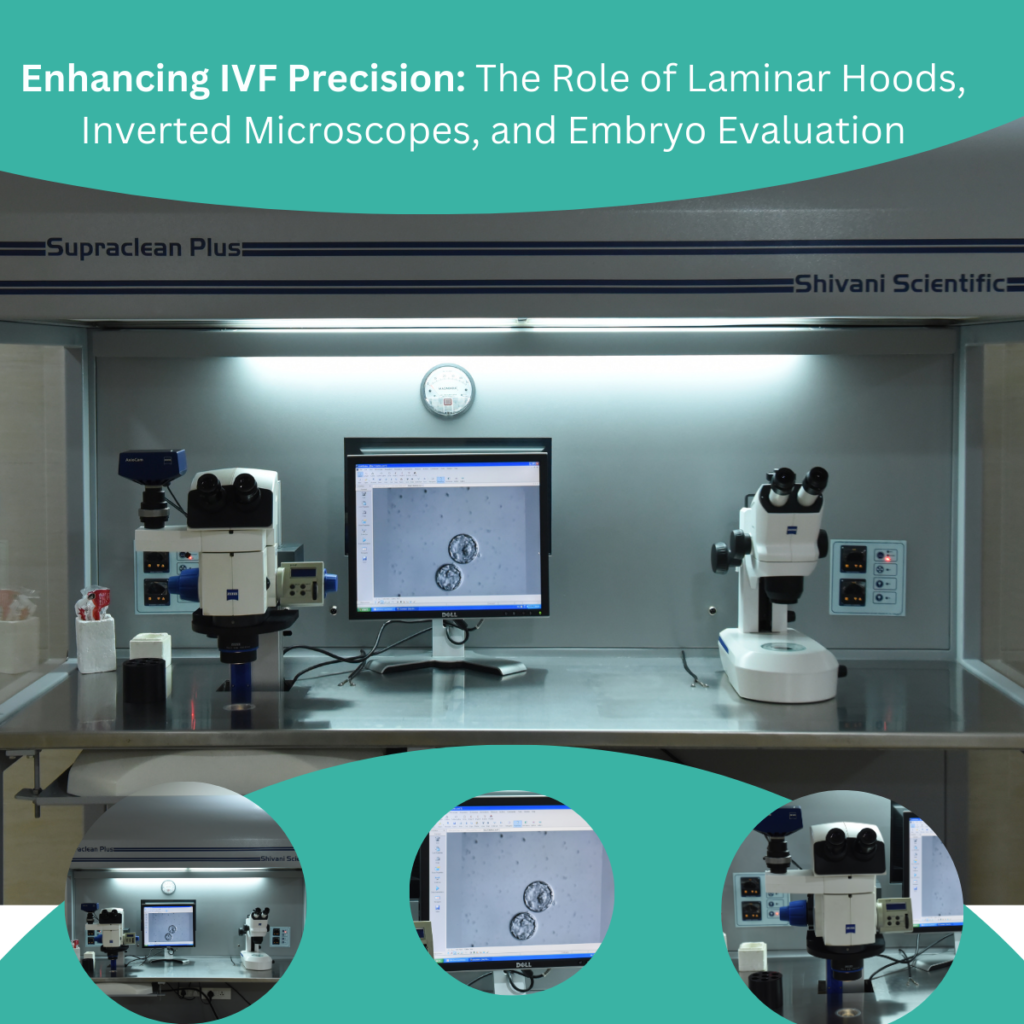Advancing Precision in IVF: The Role of Laminar Hoods, Inverted Microscopes, and Oocyte and Embryo Assessment.
In the world of assisted reproductive technology (ART), the quest for successful in vitro fertilization (IVF) outcomes hinges on precision, sterility, and meticulous assessment. Two indispensable tools in this journey are the laminar hood and the inverted microscope, which are crucial in maintaining a controlled environment and enabling detailed examination of oocytes and embryos. Let’s delve into how these instruments and advanced oocyte assessment techniques shape the landscape of modern IVF laboratories.
The Laminar Hood: Guardian of Sterility:
The laminar hood, also known as a laminar flow cabinet, is the cornerstone of sterility in IVF labs. This essential equipment creates a particle-free work area, which is crucial for handling delicate gametes and embryos.

The Inverted Microscope: Window to Cellular Detail
The inverted microscope is vital for embryologists, offering unparalleled views of oocytes, sperm, and developing embryos.
Integrating Technologies for Optimal Outcomes:
The synergy between laminar hoods, inverted microscopes, and advanced assessment techniques creates a robust framework for IVF success.
Environmental Control
Laminar hoods provide the sterile environment necessary for all stages of IVF, from oocyte retrieval to embryo culture. This controlled setting minimizes external factors that could negatively impact gamete and embryo quality.
Precision in Assessment
Inverted microscopes, especially those equipped with advanced imaging capabilities, allow embryologists to make informed decisions at every stage of the IVF process. These tools are indispensable, from selecting the best oocytes for fertilization to choosing the most viable embryos for transfer.
Conclusion
The laminar hood and inverted microscope are more than just equipment; they are the guardians and windows of life in the IVF laboratory. Combined with sophisticated oocyte assessment techniques and rigorous fertilization checks, these tools empower embryologists to navigate the complex journey from gamete to embryo with unprecedented precision.
As we look to the future, integrating artificial intelligence and machine learning with these established technologies promises to refine our ability to select the most viable embryos further, potentially increasing success rates. In the ever-evolving field of assisted reproduction, the commitment to technological advancement and meticulous attention to detail continue to bring hope to countless individuals and couples on their path to parenthood.
